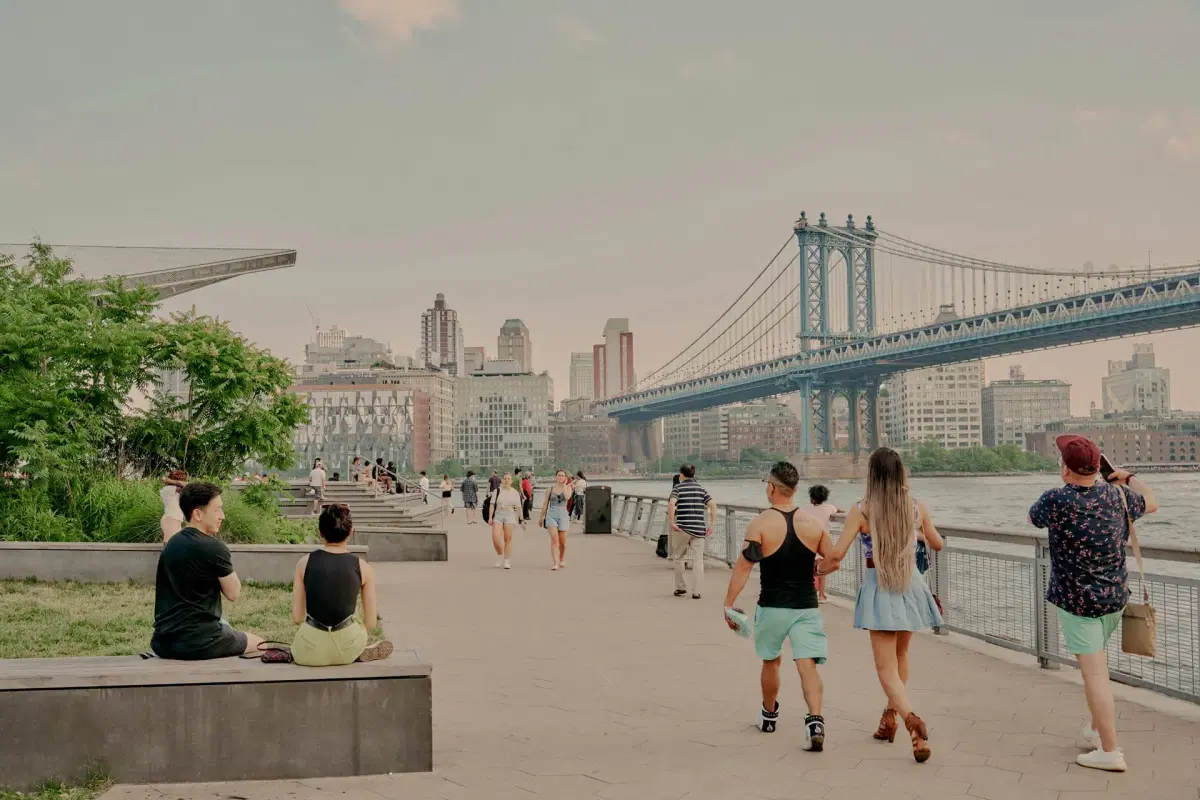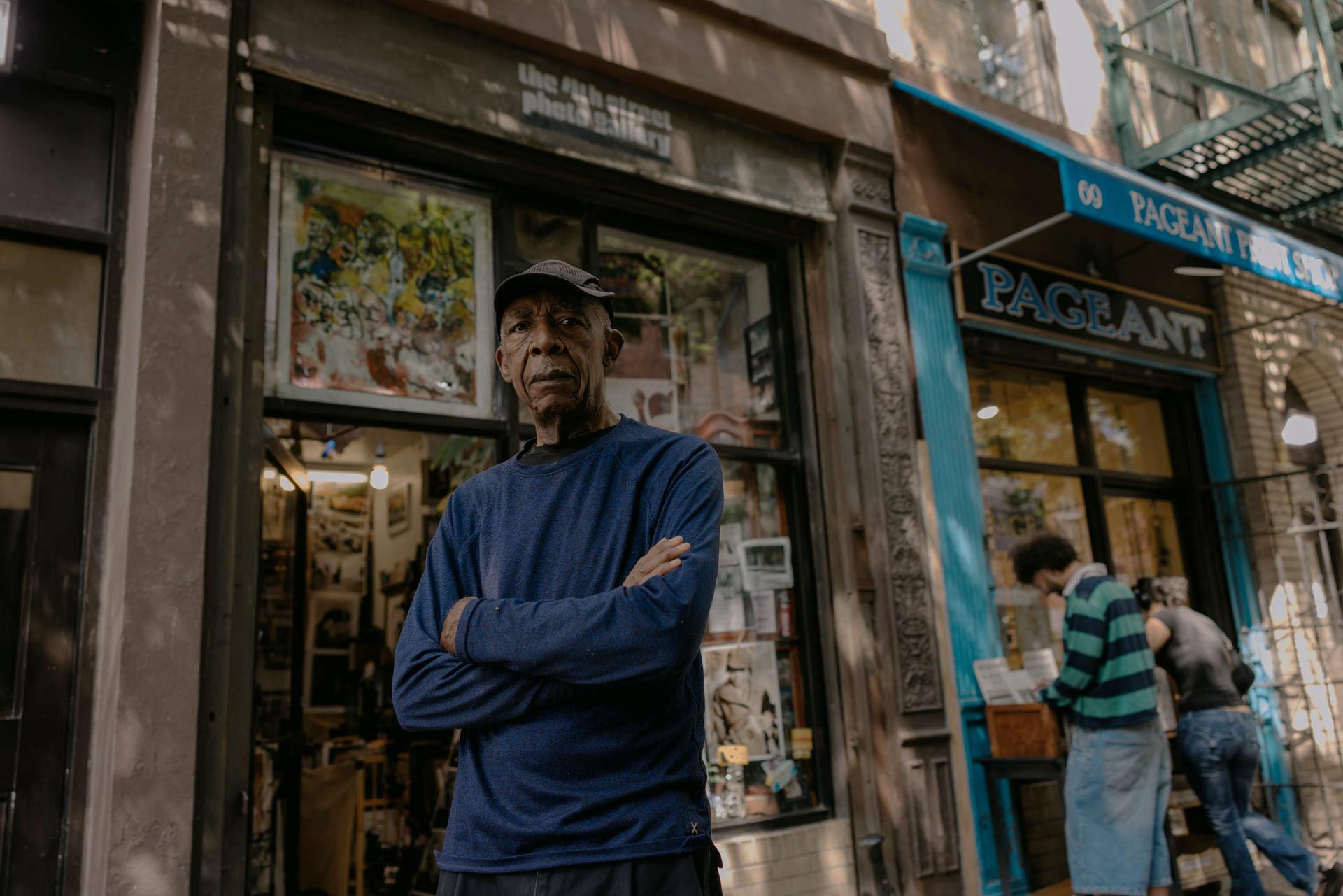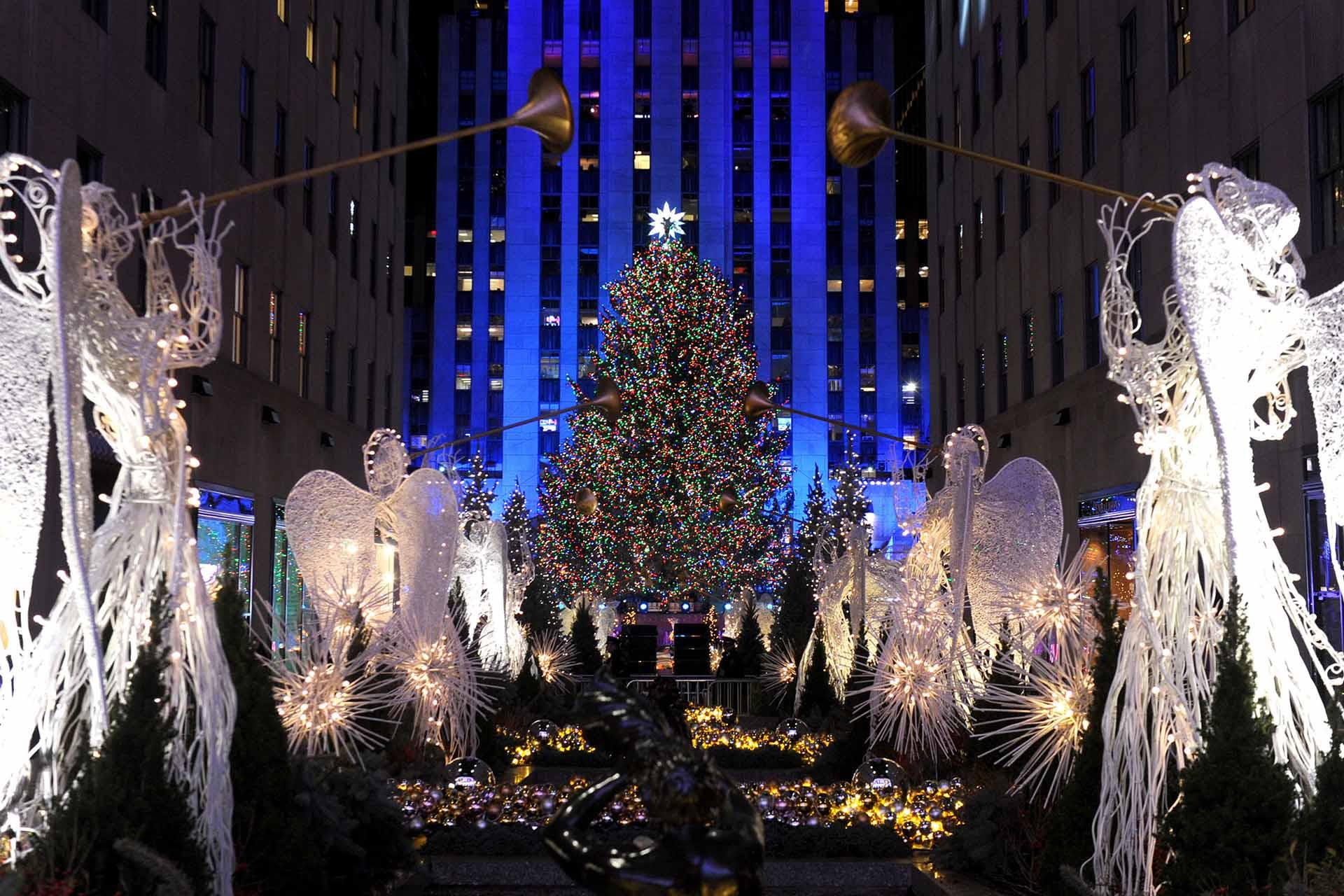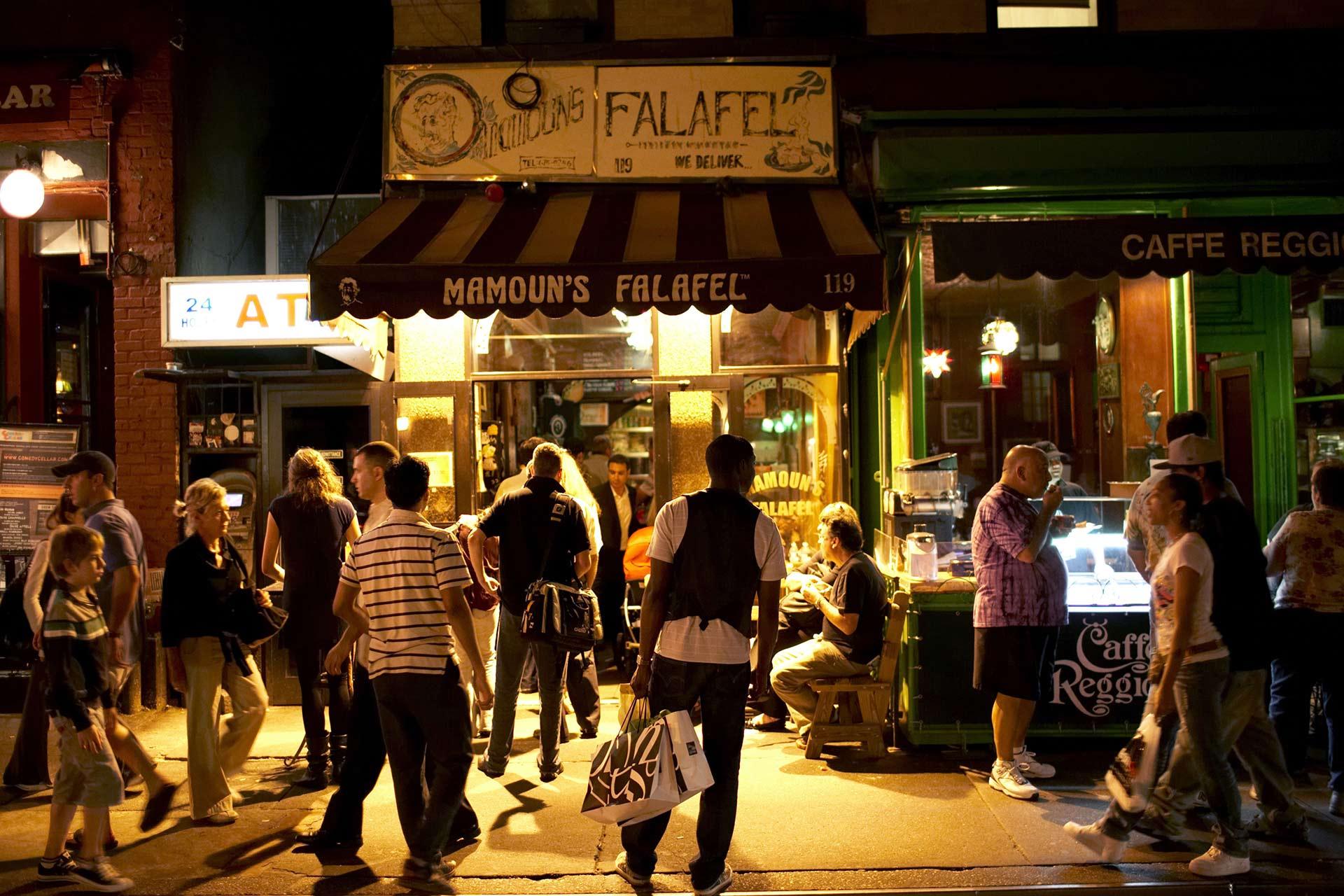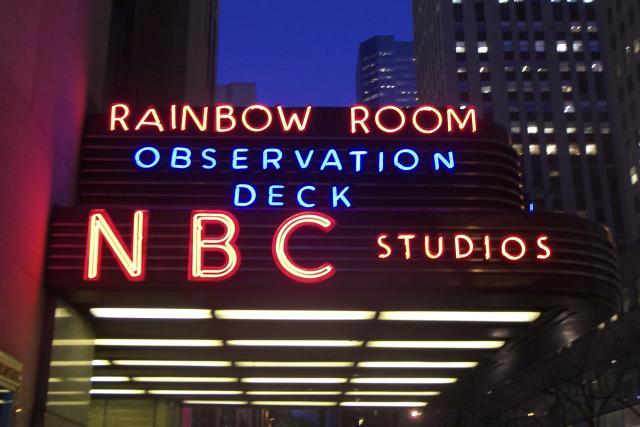Most of New York City is situated on islands. Manhattan, Staten Island, and Brooklyn and Queens—which are part of Long Island—are all surrounded by water. Pier 35, which opened in 2019, offers an immersive experience of that nautical environment. The waterfront oasis on the Lower East Side provides a tangible sense of tidal choreographies and biodiversity, along with striking views of Brooklyn, great picnicking spots and space for contemplative pursuits like tai chi. To top it all off, there are porch swings.
The pier is the final piece in the redevelopment of the East River Waterfront Esplanade, a 2-mile-long stretch of gathering space, walkways, bikeways and other amenities. Designed by the architecture firm SHoP in collaboration with landscape architects Ken Smith Workshop, Pier 35 is a showcase for new thinking in urban sustainability.
In addition to a tidal estuary that is helping to restore habitat for mussels, the park space is bordered by a massive green wall—the largest such installation in the City. “We hope that, with this project, and the rest of our work on the East River Waterfront Esplanade, we can inspire a dialogue about the different ways to incorporate public space, and green space, into our communities,” says Cathy Jones, the lead architect for the project. Below, check out our guide to Pier 35’s key features.

Courtesy, Ken Smith Workshop
Mussel Beach
This area, so named “Mussel Beach” because of its role in restoring habitat for ribbed and blue mussels, is visible through an extensive cutout in the pier construction, close to the entrance, where a metal footbridge spans the concrete bed that slopes downward toward the river. The water noticeably rises during high tide and recedes during low tide (you can find timing predictions here).
Landscape designer Ken Smith notes that while some of the design touches—the pier’s dunes, lawns and folded metal screen at the back of the site—were devices for making the pier’s space feel bigger, “Mussel Beach makes the time feel bigger” because of the way it focuses visitors’ attention. “Normally in Manhattan, if you see the edge of the river at all, it’s static,” he says. “You don’t see it moving up and down.”
This is one of many areas in the development that exemplify its planners’ “prototyping” approach, in which smaller projects serve as tests for ideas that, once tested and proven effective, can be more widely implemented. If the mussels thrive at this estuary, says Smith, there could be “more robust installations elsewhere up and down the river.”

Courtesy, Ken Smith Workshop
Habitat Restoration
Mussels, oysters and other mollusks once were populous denizens of the Hudson River and surrounding areas until their numbers diminished in the early 20th century because of overharvesting, pollution and habitat degradation. In recent years, they’ve made a comeback as local groups have spearheaded restoration efforts like the Billion Oyster Project and the River Project on the Hudson River. Mussels, like oysters, remove toxins and pollutants from the water while helping to restore habitat for other marine creatures. They have an affinity for those liminal areas between dry land and open ocean, making the estuary an ideal habitat. According to the scientist tracking the Pier 35 site, the mussels have begun to repopulate there. Working in collaboration with an ecologist, Smith’s team made sure the underlying concrete was given a ridged texture that mussels like, and they carefully placed boulders on top so as to allow ideally sized crevices where the creatures would attach.

Courtesy, Ken Smith Workshop
Viral Vines
At over 300 feet long and 35 feet high in some places, the green wall is a showcase feature of Pier 35. Smith carefully chose the varieties of plants so they would be hardy enough to survive urban conditions and sufficiently aggressive to engulf the metal screen that forms their climbing wall—a process estimated at two years. Smith selected Virginia creeper and Boston ivy—typically the plants that cover buildings on college campuses—for their mettle, adding in honeysuckle vine for fragrant flowers and trumpet vine for its pretty blossoms. The evergreen English ivy will be a constant as other vines change colors and fade during the fall and winter. The wall has several practical roles; its foliage moderates the air temperature here and hides the still-active DSNY building on the pier’s northern side.

The Swings at Pier 35. Photo: Victor Llorente
The Swings
Near the East River side of the pier, on a raised platform, are four metal porch swings suspended from a canopy. The elevation allows for spectacular views of the water, the Manhattan and Brooklyn Bridges, across the river into Dumbo and Williamsburg, and south along the esplanade. The swings have proven to be a popular attraction. “We think of the area that houses the swings as the City’s ‘front porch,’” says Jones. “Since you are above grade and above obstructions such as railings, you get the feeling that you’re suspended in the middle of the river.”

Courtesy, Ken Smith Workshop
Lighting
The nighttime lighting at Pier 35 was designed to enhance the location’s comfort and fit into the site’s sustainable design. The lights are highly efficient, long-lasting LEDs. Lighting installations subtly integrated into the wood bench seating provide the area with a warm glow, highlighting spaces to gather and sit. Brighter LED floodlights are used to light the green wall, and the strategic absence of light in some spots is as notable as its presence. Instead of the “pedestrian poles” typically used along the waterfront’s perimeter—as they are on the Hudson River side—the lights at the pier are all located away from the water’s edge, ensuring that viewers have gorgeous, unobstructed views when looking out.
What’s Next?
In 2024, NYC Mayor Eric Adams and New York Governor Kathy Hochul announced plans to install a 9,000-square-foot floating pool in the East River. The City has partnered with +POOL to create a giant, multi-pool floating structure off Pier 35 open to New Yorkers during the intense heat waves of summer. Following a three-month water filtration demonstration project to ensure safety for swimmers, city officials expect the pool to debut in summer 2025.

